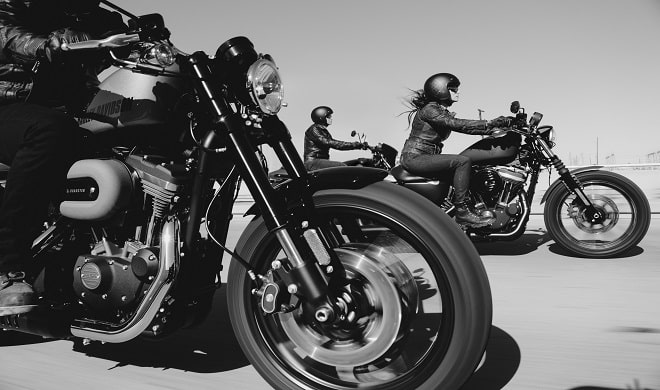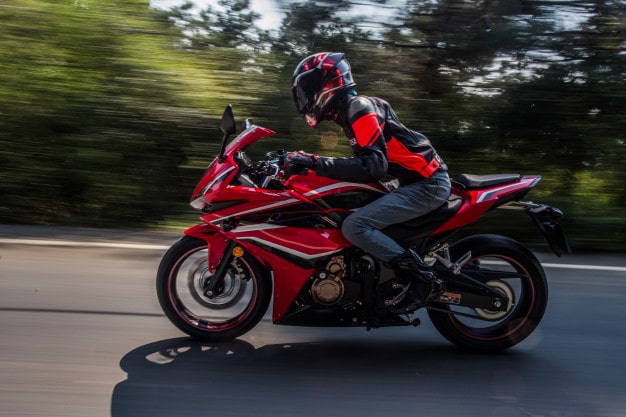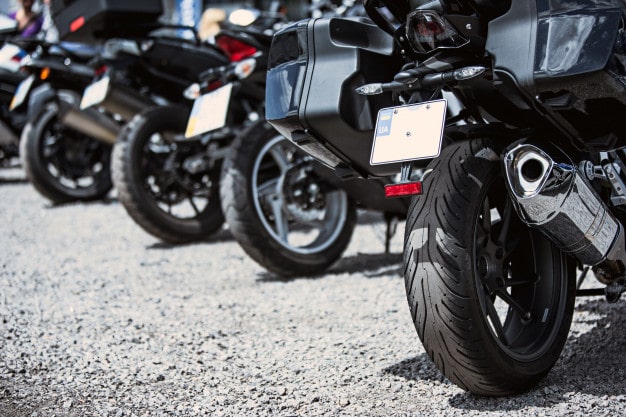It’s hard to beat the joy you feel on a motorcycle. However, you understand that riding a motorcycle can be dangerous if you don’t know what you’re doing. You can reduce the risk by developing motorcycle riding skills. Find out how to be a better motorcycle rider, so you can embrace this way of life.
Where to Practice Motorcycle Riding
If you’re new to riding a motorcycle and don’t have much riding experience, you know the importance of practicing and training your basic riding skills. You can go through motorcycle practice drills in a parking lot. Choose a large, empty parking lot that is free of lamp posts, trees, and dividers. You can set up cones to run drills.
Use the cones to practice driving in a straight line, weaving, and more. If you are a new rider it’s a good idea to take an additional motorcycle safety course along with the basic rider course. It’s also advised to read Motorcycle Roadcraft if you are a novice rider or a returning rider.
What Is a Brake Reaction Time?
Brake reaction time refers to how long it takes you to apply the brakes when encountering a hazard. You will identify the hazard, think about what to do, and then apply the brakes.
Most drivers spend 0.75 seconds thinking of what to do. Then, they apply the brakes. That might not seem like much time, but you will travel a relatively far distance before you apply the brakes. A motorcyclist should always take motorcycle safety into consideration and leave some time for emergency braking.
Improve Basic Braking Skills
Poor braking skills cause countless motorcycle accidents. People generally have poor skills because they don’t understand how the brakes on motorcycles work. When you engage the brakes, the motorcycle’s weight shifts forward, causing the front tire to push into the pavement. When this happens, it creates additional braking power.
If you apply the full braking pressure before the center of gravity shifts, your brakes could lock, or if you have antilock brakes, the ABS will engage. You will reduce braking power and could cause an accident.
Avoid using both front brake and rear brake at the same time.

Clutch Control
Whether you’re firing up your motorcycle, riding slowly, or encountering hills and turns, clutch control is a must. Clutch control begins by finding the engagement point. Make sure your bike is on a flat surface and put it in first gear.
Release the clutch slowly. You’ll notice a point where the bike wants to pull away. When that happens, you’ve found the engagement point. Then, hit the road, riding slowly while continuing to practice your clutch control skills.
Gear Shifting
If you want to improve your motorcycle riding skills, you also need to work on gear shifting. Knowing when to shift up and down is an important skill. It’s also a motorcycle-riding skill you can master by listening to your engine.
Does your engine have a low pitch? Shift down. On the other hand, if it has a high pitch, shift up.
Countersteering
Countersteering is one of the most important concepts for motorcycle riders to understand. It refers to pointing the wheel and turning the handlebars in the opposite direction when making a turn. As you know, your motorcycle turns when you lean it. However, you might not realize that you cannot effectively complete tight turns on heavy bikes without countersteering.
You can practice countersteering on an open stretch of road. You’ll need to drive at least 20 mph to test your skills.

Keeping Distance
If you spend a lot of time on the road, you’ll notice that some motorcyclists don’t maintain a safe distance. They zip through traffic without obeying the laws of the road, and that puts them in danger. You should maintain a distance of at least two seconds between other motorists. Increase the distance if you’re driving in bad weather.
You also need to maintain that distance when overtaking another vehicle. Maintaining a safe distance allows the vehicle to see you. It also makes it easier for you to check oncoming traffic.
Before overtaking the vehicle, move slightly to the left of the vehicle in front of you. Check for approaching traffic, and if it is safe to do so, overtake the vehicle. Because motorcycles accelerate quickly, you can easily overtake the vehicle when starting from a safe distance.
Throttle Control
Throttle Control is a basic skill very important for motorcycling riding ability. Lack of throttle control is one of the most common mistakes new riders make, and it can be dangerous. Without throttle control, you can fly off your motorcycle.
The trick is to maintain a wrist-down position when holding the throttle. When your wrist is down, you won’t inadvertently engage the throttle. Also, when you’re in this position, you’ll be forced to close the throttle when you hit the front brake lever.
Downshifting
If you’re going to master the roads, you need to understand the art of downshifting. Downshifting is critical when approaching a corner. You can do it smoothly by maintaining clutch and throttle control. The key to smooth downshifting is to match the rear wheel speed to the engine’s RPM.
You can do that by giving the throttle a quick rev. Then, use the clutch to downshift. It will take some practice to get this exactly right, but when you do, you’ll never have to worry about rough downshifting again.
Lane Sharing and Changing
Lane sharing, or splitting, is legal in California. This is the practice of riding between lanes of traffic. While legal, lane splitting can be dangerous. Reduce the risk by limiting your speed. The faster you go, the greater the risk of motorcycle crashes. Also, be mindful of the lane markers. These can be slick, making it harder for your brakes to engage.
Scan the area for risks at all times and have an escape plan in case you need to merge into a lane again. Finally, don’t split lanes between large vehicles such as 18-wheelers. These vehicles have larger blind spots, and you can get serious traumatic brain injury if you’re in an accident.
You also need to follow safety protocols when changing lanes. This is much like overtaking a vehicle. Give yourself ample space and make sure you’re visible. Check your surroundings, and if the road is clear, change lanes.

How to Improve Motorcycle Riding Skills
Improving motorcycle riding skills takes some work. If you put the time in, you can start driving like a pro. Look at some ways you can improve your basic motorcycle skills.
Try Riding in a Group
Riding with a group will put you on the fast track for developing your skills. As a beginner, you’ll ride behind the lead rider. Other motorcyclists will keep an eye on you and provide tips to improve your motorcycle riding skills.
Ride With an Experienced Rider
If you want to know how to be a better motorcycle rider but don’t want to join a group, team up with an experienced rider. Motorcyclists are generally willing to help others develop skills.
Ride on a Track
You can hone your skills by riding on a track. Track riding is the closest you can get to ride on the open road. However, until the open road, you don’t have to worry about traffic signs, oncoming traffic, and huge trucks. That makes it a great spot to practice riding a motorcycle.
Fully Understand How Your Bike Works
Getting your first motorcycle is exciting. You want to jump on and start riding but stop for a minute. If you are serious about developing your skills, you need to understand how your bike works fully. Take the time to go over everything, from the clutch and throttle to the tires. When you understand the components, you will know how to use them on the road.
Develop Your Skills By Practicing
Now that you know how to improve your motorcycle riding skills, it’s time to get to work. Practice in a parking lot or a track. As you get better, you’ll be ready to share the roads with others.
Safe riding!
